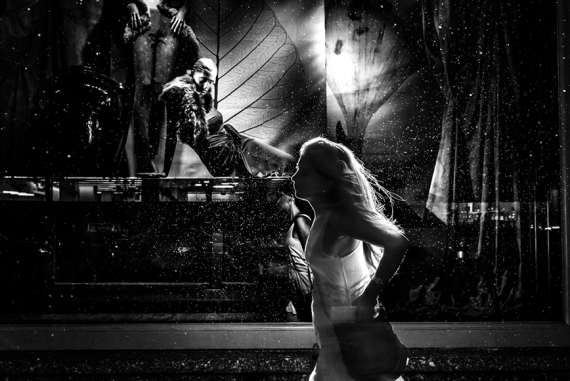Yaniv Hason








My name is Yaniv. I started photographing in 2006 and never stopped. I’ve always been an artistic and creative person, but I also loved science. I studied medicine and today I split my time between medicine, photography, and art.
Photography is a true passion. I’m self-taught through hundreds of photo books and thousands of hours spent photographing. I don’t think I can categorize myself under any particular genre.
Rather, I photograph anything that excites me – it’s all about the image, and it’s very important to me to try and be original. I’m very sensitive to changes of light, and I read scenes very quickly.
Usually just before I press the shutter button I instinctively look away from the scene as if I am looking inwards to bring it all together. In the future, my goal is to focus more on long-term, documentary projects.
Cameras
Mamiya 7II: Despite this being a medium format film camera, this is my first choice and my work-horse for many of my images. I bought it in 2011. I love everything about this camera. Although it’s a medium format, it feels and works better than most DSLRs or mirrorless digital cameras.
It is very light and very simple. My favourite thing about it is that you have to visualize everything in your mind before you take the picture; you only use ISO, shutter speed, and aperture. You really need to work for the image. No fancy menus. No chimping.
My next favourite thing is the aspect ratio of the image, 6×7. For me, it is the best ratio to compose an image. It’s also a great ratio for portrait orientation, something that I can’t really say about the 35mm full-frame.
The Mamiya 7 has some of the best glass in the world. I own the 50mm, 65mm, 80mm, and 150mm. They are all spectacular, yielding images that often look crisper than life itself. My usual go-to on the street is the 65mm because it is very close to a 35mm in full-frame.
But I use all of them. The 50mm (and 43mm, which I don’t own) requires an additional external viewfinder. Oh and if you didn’t know, this is a rangefinder camera. It took me a bit of time to get used to shooting with this after years of using a DSLR, but I wouldn’t choose anything else.
Fujifilm X-T3: This is often my go-to system for a lot of my street work, and if I need to use a camera for an event, especially indoors where I will need to shoot in low lighting. I only own the Fujifilm 23mm f/2 lens (35mm equivalent).
I initially traded in my Fujifilm X100T for this because I was thinking of doing some fashion work and thought I would need interchangeable lenses. This is a great camera and I find the images with the Fujinon lens to be incredible.
Personally, I don’t need any of the elaborate menu options that modern digital cameras offer, I like to strip it all down to the bare essentials (ISO, shutter, and aperture) so that I can just pay attention to the scene.
Despite loving to use my Mamiya 7, today having a digital camera is a must, in my view, and the Fujifilm line of cameras is excellent for my needs.
I also recently purchased a Konica Hexar RF 35mm rangefinder along with a 35mm lens. This is a manual camera with M-mount lens system. I bought this camera to have a nimbler option for street work with film. This is an amazing camera.
It feels like a Leica, but it winds film automatically, which makes shooting with it super quick and fun. It’s very simple to use if you’re used to using a rangefinder system. It’s known by some as a ‘poor man’s Leica’ for good reason.
Having said that, and even though I love using it, today I feel that using 35mm film for work is not a good option for me, and I often opt to use my Fuji for convenience, even though I prefer the Konica’s experience.
Lenses
For the Mamiya, all prime lenses: 50mm f/4.5, 65mm f/4, 80mm f/4, 150mm f/4.5. They are all stunning, made of metal, and fun to use. I use the 65 and 80 for street and daily use. I recently started using the 150 more, and it is an amazing lens for portraits. I use the 50 (which is about a 25mm equivalent) usually for smaller spaces.
Fujinon XF 23mm f/2: This is a relatively cheap but excellent lens. I’m blown away by the image quality at times. The only thing missing for me is the distance scale engraved on rangefinder system lenses.
Konica Hexanon 35mm f/2: A great, compact, M-mount lens built for rangefinder system. Includes a finger lever, which I love.
Hardware & Software
I use Lightroom and Photoshop to edit my photos on my iMac computer.
The gear one uses is secondary to passion and to doing the work. But you also need to love the gear, and enjoy holding it. I highly recommend for anyone to try a manual film rangefinder system.
Shooting with film is great not because ‘film is back’ or because it’s cool – that doesn’t matter. But because shooting with film manually really gets you involved intimately with the image.
It gets you to really pay attention to light. And it gets you in the practice of making a choice and then moving on to the next one.


Check out these 8 essential tools to help you succeed as a professional photographer.
Includes limited-time discounts.













